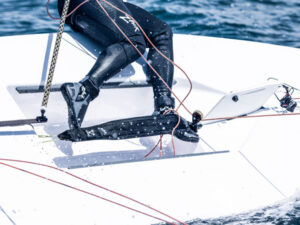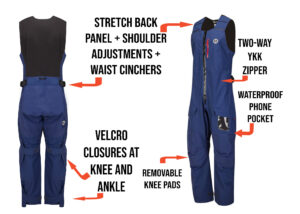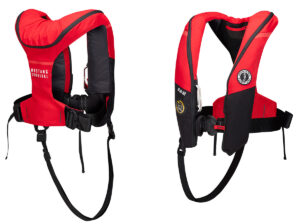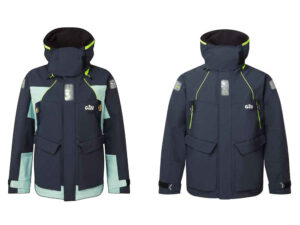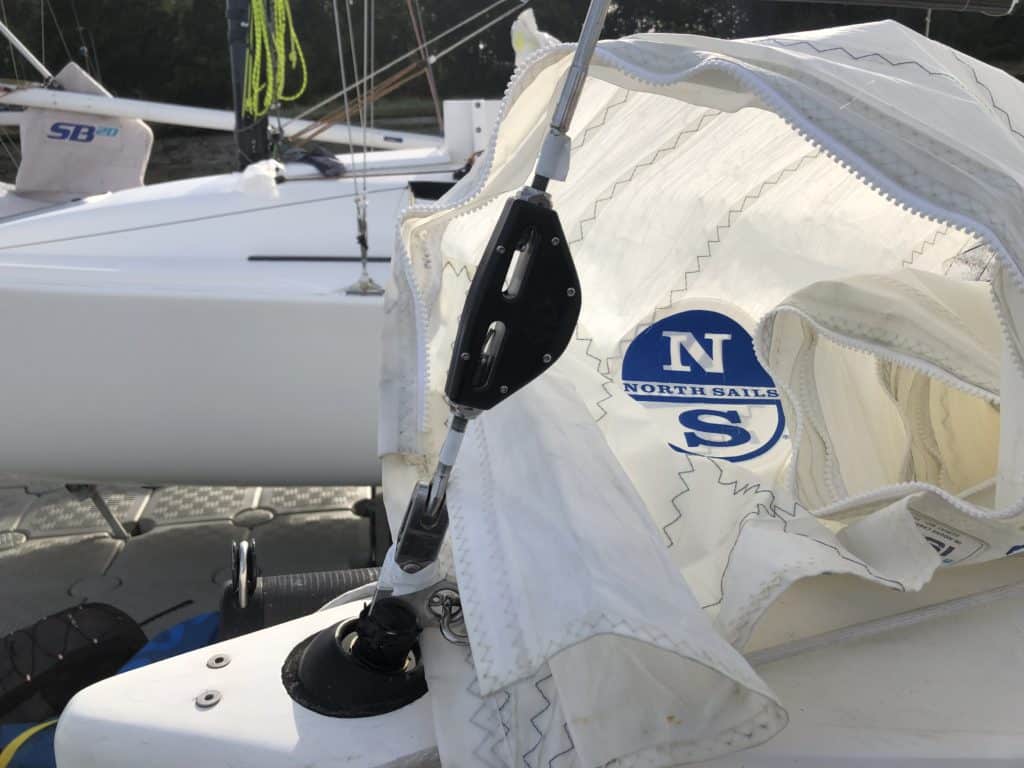
Every now and then something very cool and helpful comes along to help take some of the guesswork out of our sailing. Enter Cyclops Marine’s Smarttune turnscrew and Smartlink load sensors. Smarttune sensors are used exclusively for standing rigging applications, but the Smartlink sensor can be used just about anywhere. What’s especially cool is that you can see the data they provide in real time, and you can download all of it to a smart phone to view it on a graph or in other formats. While these sensors might not be race legal in your class (they’re not in the J/70), they are immensely useful for training. I used them on the J/70 Midlife Crisis in preparation for the 2021 World Championships in Los Angeles, California.
To display the sensor information on our J/70, we used a B&G Triton2 display, which requires the addition of Cyclops’ wireless gateway to the NMEA2000 backbone of the B&G instruments. The data is compatible with many other instrument brands and can also be viewed using the Cyclops Marine “Smart Fittings Manager” App, communicating via Bluetooth. The App allows you to review, record, graph, and save the data in multiple formats. The graphing function is especially revealing as it shows what’s happening with the rig tension, etc. as you go through settings on the dock or sailing upwind through different conditions.
For example, we always wondered what happened to the headstay load as we tightened our shrouds, so we put a Smarttune turnscrew sensor on our headstay. We thought if we were to plot the headstay load relative to the number of turnscrew turns above our base setting, the headstay load would graph as a curve. At some upper end in shroud tensioning, however, the forestay would stop getting much tighter. To our surprise, the graph was very linear—the forestay just got tighter and tighter. So, in heavy air, within the safety tolerances of the mast, we learned we could go with tighter turnscrew settings, producing a gradually tighter headstay.
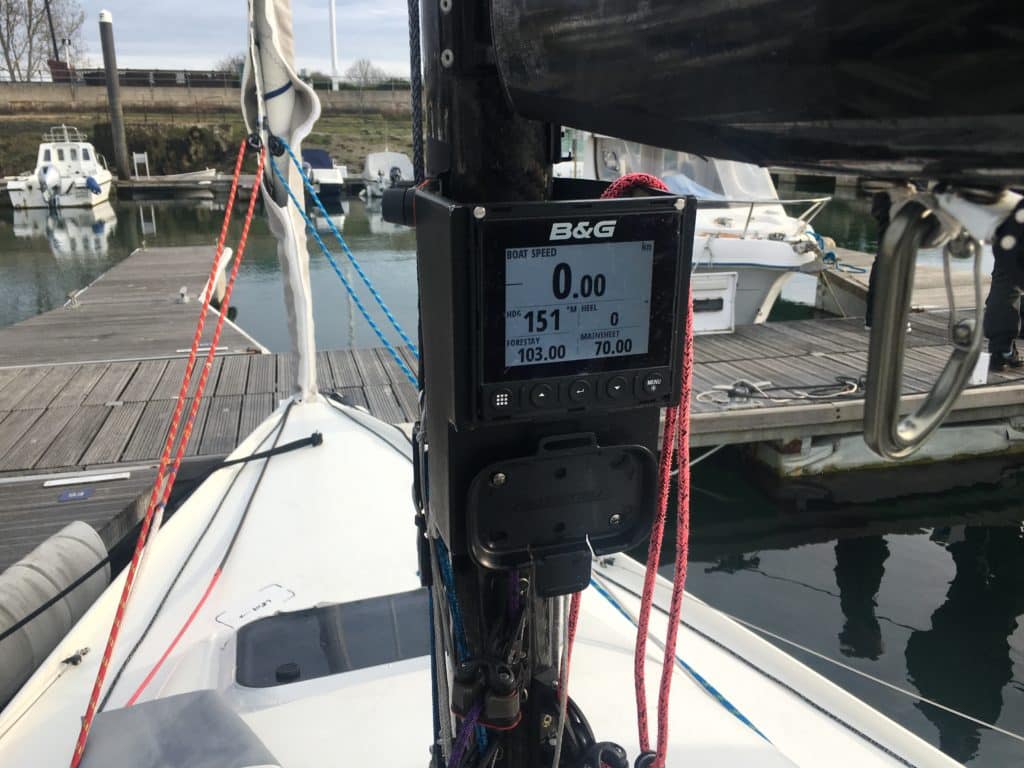
The Cyclops Smarttune also reinforced the importance of getting shroud settings correct before the start so that our other settings—backstay, vang, inhaul, etc.—stay consistent. Another example: the graph clearly showed that the amount of backstay used is relative to how much shroud tension we are carrying. Not enough shroud tension and we had to carry too much backstay to hold the forestay load. Too much backstay and our mainsail got too flat, and so forth. That’s essential stuff to know.
We also used the Smartlink to help confirm and quantify what we already knew. When it’s windy, a J/70 vang is often tight when sailing upwind, so we installed a Smartlink Nano (the smallest sensor in the line) on the vang. As we ease the main in big puffs, the downward load on the leech is transferred from the mainsheet to the vang, which bends the mast more. That, in turn, affects forestay tension. How much? The sensor quantified that for us. It also quantified how much additional headstay load we could achieve by sheeting the mainsheet harder. All told, that data helped us balance settings and sheet loads as the wind speed went up and down.
The crew of past J/70 world champions, Eat, Sleep, J, Repeat took the system a step further by adding wind instrument data into the mix, which allowed them to figure out which settings worked best in certain wind conditions. They were still able to train themselves as to what 8 knots of wind feels and looks like and duplicate proven settings for that wind range.
What would be some applications for other boats? World champion sailor Andrew Palfrey has been using these products on Etchells and 5.5 Meters to help develop accurate instincts for the trimmers on the water. “On the Etchells, the jibs have to go through such a wide wind range that headstay sag, especially in light to medium winds, is critical,” Palfrey says. “With the Cyclops sensors, we now have a reliable tool to accurately measure headstay load. It is a training tool, as they are not legal for racing in the Etchells. But they do provide factual information and help develop your eye for determining headstay sag by comparing the sag amount and luff entry angle to a given load. It’s also a great learning tool for seeing the factual effect of differing backstay and mainsheet loads on the headstay.”
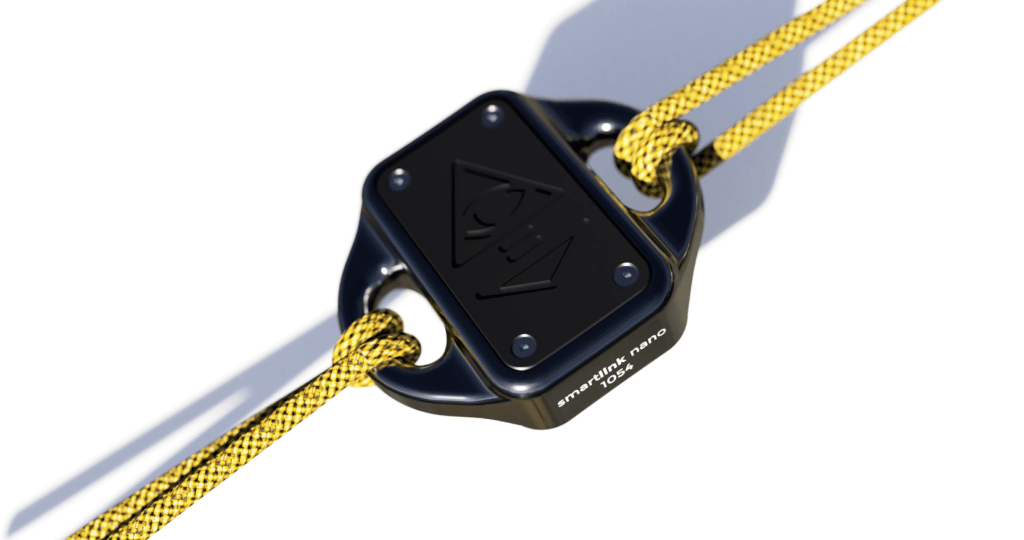
The Cyclops products offer the potential of further equalizing performance between professional and amateur teams. With the Cyclops Smarttune and Smartlink and a little time sailing, it could be far easier for amateur teams to match the settings and loads of the professional teams. Top sailmakers share settings and many one-design classes have round table discussions after sailing about what top boats were doing, and with the Smarttune, especially, mid-fleet teams could learn how to achieve proper headstay tension throughout wind ranges, thus ratcheting up their performance.
The Cyclops products also have applications aboard bigger boats, since you can put them between just about anything. They are often used on blocks and lines to make sure that safe working loads aren’t exceeded. In the 2021 Transpac Race, Pyewacket, first-to-finish and new 24-hour course record holder, was equipped for this race with outriggers to optimize sheeting angles for their large downwind sails. They didn’t want to go beyond the safe working load for the outriggers, but they also wanted to be pushing the boat as hard as possible and not break anything. Adding a Smartlink to the outrigger down line allowed them to monitor the load in real time, displayed on their B&G instruments. The outriggers never failed. The Smarttune comes in five sizes (from 5/16 to 3/4″ thread diameter). The Smartlink also comes in five sizes (from 600kg to 20 tons). The smallest in the line, the Smartlink Nano, is accurate to within ±6kg. Both Smarttune and Smartlink are factory calibrated and accurate up to ±1 percent of the sensor maximum working load. Check out Cyclops Marine for current pricing.

